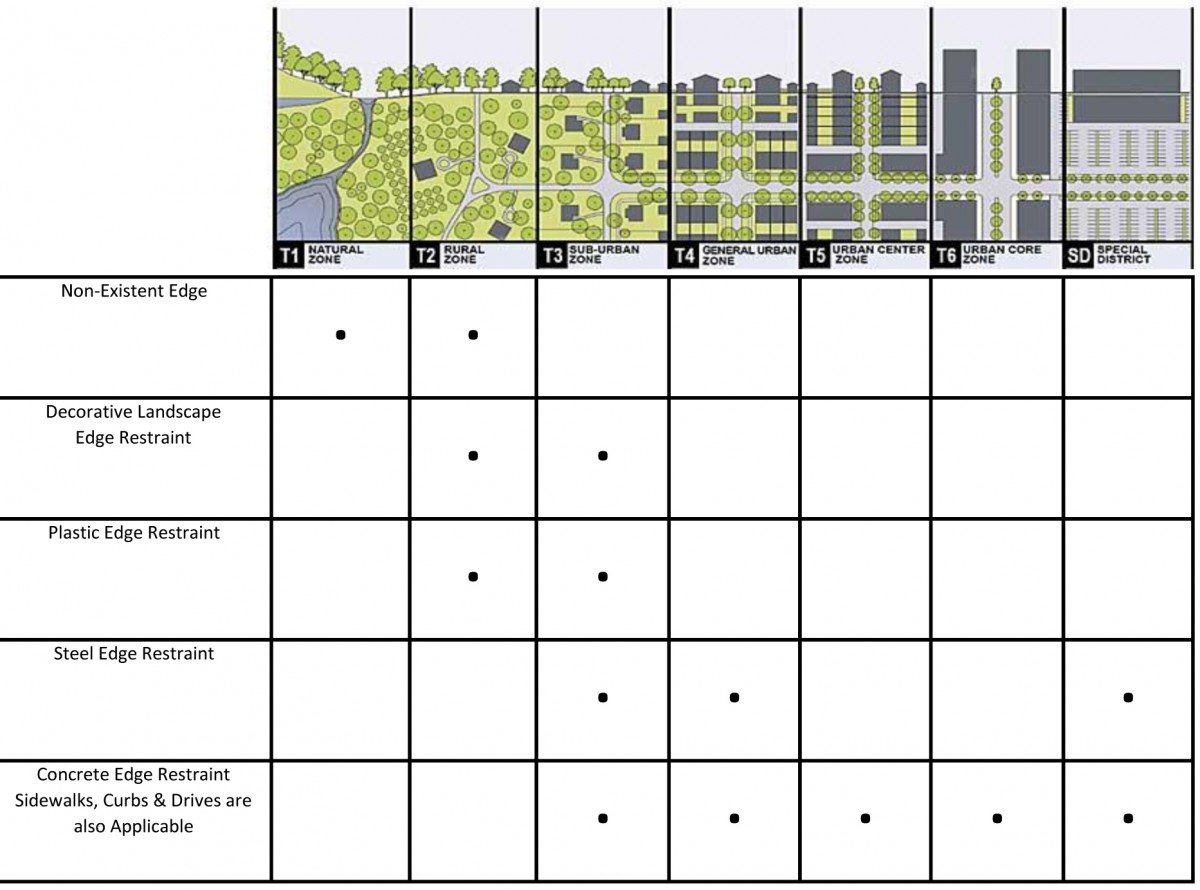Previously, I wrote a blog on edge restraints (Landscape Edging: Which Variety Should I Use?) and some of the positives and negatives associated with them. In this blog post, I am going to relate the types of edge restraints to locations in which they would/should fit into the rural-to-urban transect associated with the SmartCode.

Non-Existent Edge: The non-existent edge has a fantastic appeal to it, providing a much more natural edge that may flow a few inches back and forth of its originally planned location. It is most appropriate in the more rural settings of the landscape, or in the transect zones of T1 and T2. The ground-plane treatment with this type of edge is equally important and in the coming weeks, I will put together a transect table similar to the table in this post for the ground treatment.
Decorative Landscape Edge Restraint: This restraint is typically raised above the surface and always intentionally visible in installation. It is often more appropriate in the more rural applications than urban applications due to its nature and is illustrated on the table in transect zones T2 and T3.
Plastic Edge Restraint: This edge restraint is sometimes created with other materials than just plastic, but it refers to the restraint in which approximately 4-inches of plastic are located below-grade with a circular top to the edge. As I mentioned in the post (Landscape Edging: Which Variety Should I Use?) on Wednesday, this restraint works best when the installation hides the restraint as much as possible. It should be restricted to use in only transect zones T2 and T3.
Steel Edge Restraint: This is a great option when installed correctly because it allows the edge to be hidden from view. It is the most durable option available, and is appropriate in most locations along the rural-to-urban transect, however it is best utilized in the transect zones T3, T4 and SD.

Concrete Edge Restraint: This is the ideal application for edge restraints, however it is also the most expensive. One item to note is that when concrete curbs, sidewalks or driveways are adjacent, additional edge restraints are not necessary. The image to the right illustrates an example that is all-too-often occurring in the landscapes (especially private homeowner). Save the money for edge restraints and do not utilize an edge next to an edge. The concrete edge restraint should be the only edge restraint utilized in transect zones T5 and T6.







